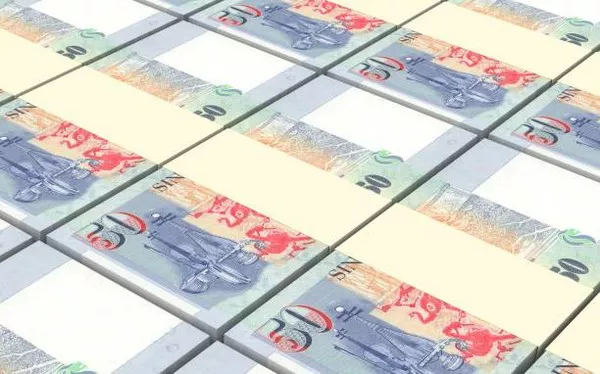The Singapore Dollar (SGD), often celebrated for its stability and resilience, has recently faced a period of depreciation. In this comprehensive analysis, we delve into the complex factors contributing to the fall of the Singapore Dollar. From economic indicators to global market dynamics, understanding the reasons behind this depreciation is essential for investors, businesses, and policymakers navigating the intricacies of the currency market.
Singapore, a small but economically vibrant nation, is known for its open-market policies, strong financial infrastructure, and strategic location as a global financial hub. However, like any currency, the SGD is not immune to external shocks and internal challenges that can impact its value in the foreign exchange market.
8 Factors Behind the Depreciation of the Singapore Dollar
1. Economic Indicators and Performance
A. GDP Growth and Economic Health
One of the key indicators influencing the value of the Singapore Dollar is the country’s Gross Domestic Product (GDP) growth. Economic downturns or sluggish performance can lead to a decrease in investor confidence, triggering a depreciation of the currency. A thorough analysis of Singapore’s economic health is crucial for understanding the challenges faced by the SGD.
B. Unemployment Rates and Labor Market Dynamics
Changes in unemployment rates can have a direct impact on consumer spending, investment, and overall economic performance. A rise in unemployment may signal economic distress, leading to a loss of faith in the Singapore Dollar and contributing to its depreciation.
2. Global Economic Conditions
A. Interconnectedness and External Influences
Singapore’s economic ties with the global market expose the SGD to external influences. Economic downturns in major trading partners or disruptions in global trade dynamics can lead to a decrease in demand for the Singapore Dollar, contributing to its fall.
B. Trade Balances and Currency Flows
Singapore’s position as a major global trading hub makes it highly sensitive to changes in trade balances. A trade deficit or decreased demand for Singaporean exports can result in a reduced need for the Singapore Dollar, impacting its exchange rates.
3. Interest Rates and Monetary Policy
A. Interest Rate Differentials
Interest rate differentials between Singapore and other major economies play a significant role in currency valuation. Shifts in global interest rates, especially those initiated by central banks, can lead to capital flows and influence the value of the Singapore Dollar.
B. Monetary Policy Decisions
The Monetary Authority of Singapore (MAS) plays a crucial role in managing the SGD’s value through monetary policy decisions. Adjustments in interest rates and interventions in the foreign exchange market are tools used to address economic challenges or influence inflation rates.
4. Safe-Haven Status and Economic Challenges
A. Safe-Haven Status: Blessing or Curse?
The historical role of the Singapore Dollar as a safe-haven currency has provided stability during times of economic uncertainty. However, the same status can pose challenges, as excessive appreciation can harm Singaporean exports and economic competitiveness.
B. Economic Challenges and Structural Reforms
Internal economic challenges, such as structural issues or the need for economic reforms, can contribute to a loss of investor confidence in the Singapore Dollar. Addressing these challenges is crucial for restoring faith in the currency and reversing its depreciation.
5. Currency Interventions and Exchange Rate Policies
A. Monetary Authority of Singapore (MAS) Interventions
The MAS actively intervenes in the foreign exchange market to manage the value of the Singapore Dollar. Interventions, while aimed at preventing excessive currency appreciation, can introduce volatility and pose risks to the currency’s stability.
B. Exchange Rate Policies and Peg Considerations
Singapore’s historical experience with exchange rate policies, including the abandonment of the SGD’s peg to other currencies, highlights the complexities and risks associated with managing the currency’s value in the global market.
6. External Debt and Financial Stability
A. External Debt Position
Singapore’s external debt position is a factor that can impact the stability of the Singapore Dollar. A significant increase in external debt levels may pose risks to financial stability and contribute to the currency’s depreciation.
B. Financial Market Volatility
Volatility in global financial markets, driven by factors such as speculative trading or unexpected economic events, can have spillover effects on the Singapore Dollar. Sudden market movements can introduce uncertainty and contribute to the currency’s fall.
7. Unforeseen Shocks and Black Swan Events
A. Geopolitical Events
Singapore’s geopolitical neutrality does not shield it from geopolitical turbulence. Geopolitical events, such as conflicts or diplomatic tensions, can have far-reaching effects on the Singapore Dollar, contributing to its depreciation.
B. Natural Disasters and Health Crises
Unforeseen events, such as natural disasters or health crises, can introduce volatility into financial markets. The COVID-19 pandemic, for example, had widespread economic implications, contributing to the challenges faced by the Singapore Dollar.
8. Investor Sentiment and Behavioral Factors
A. Market Sentiment
Market sentiment and investor behavior play a crucial role in currency markets. Perception, speculation, and herd behavior can lead to sudden and unpredictable movements in the Singapore Dollar, contributing to its depreciation.
B. Behavioral Biases in Decision-Making
The human element in financial decision-making introduces behavioral biases that can impact currency markets. Overreactions to news, cognitive biases, and groupthink can contribute to market inefficiencies and heightened volatility.
See Also: Singapore Dollar (SGD) Currency: History, Symbol, Codes & Denominations
Conclusion and Future Outlook
In conclusion, the recent depreciation of the Singapore Dollar is a complex interplay of economic indicators, global market dynamics, and internal challenges. Investors, businesses, and policymakers must carefully navigate these factors to understand the root causes and formulate strategic responses. As Singapore addresses economic challenges and adapts to changing global conditions, the future trajectory of the Singapore Dollar remains a subject of keen interest. Observing the evolution of economic indicators, policy decisions, and global market dynamics will be crucial for stakeholders seeking to anticipate and respond to further developments in the Singapore Dollar’s journey.


